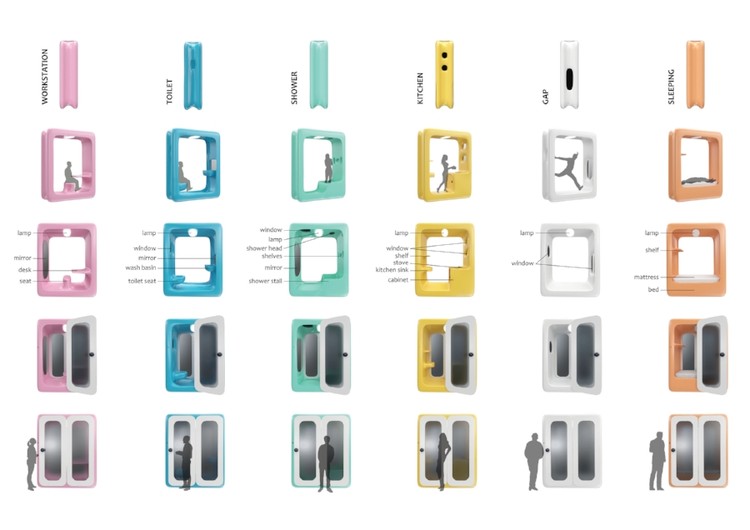
Iranian architect and concept designer Nasim Sehat has developed an alternative living module driven by adaptability for the gig economy. SLICE is described as a “sustainable, people centric, connected, self-contained, and flexible plug’n-play urban solution” targeted at future city dwellers.
SLICE consists of a layered module of functional plugins, combined to create basic spatial configurations. In tandem with the design of SLICE’s spatial profile, Shanghai-based Sehat has proposed a shared, on-demand digital service for module rental, maintenance, and payment.

The colorful modules address key living requirements, with components for showers, toilets, kitchens, workstations, and sleeping. Fenestrations in modules, as well as empty “gap” components, allow for customization based on user needs, or spatial constraints.

SLICE units are booked and accessed using the digital interface, with a deposit required for first-time users, and payment calculated based on “usage time, configuration of modules, and usage of utilities.” The service also enables users to report defected modules for replacement.

Observable trends like gig economy and increasing urbanization is fueling the creation of services that are shared on-demand and connected. Existing mobility services like mobike or pay-as-you-go co working services like nakedHub Go are good examples that are enhancing and reconstructing city life and work in Chinese cities. People tend to own less properties, less belongings, less bikes and even less devices and use sharing services. We are nearing a future where new solutions for living and working spaces are needed.
-Nasim Sehat, Designer, SLICE

News via: Nasim Sehat











